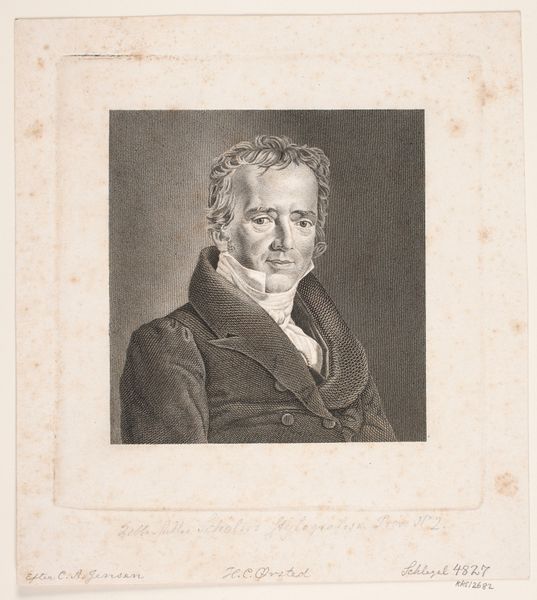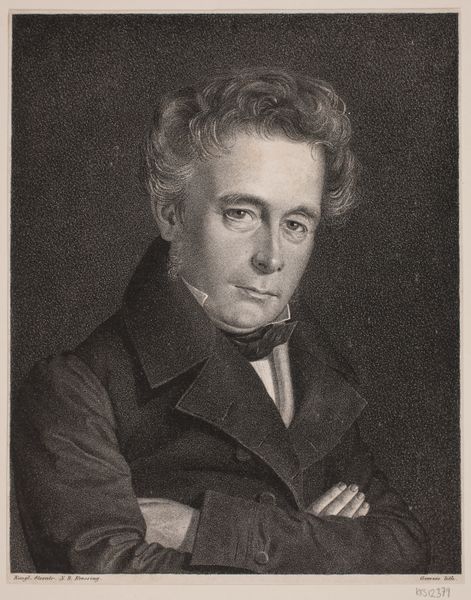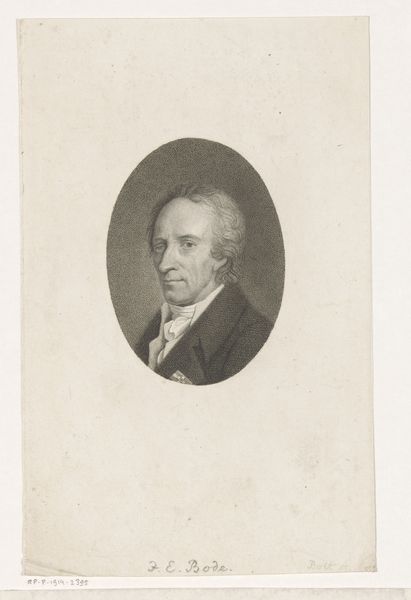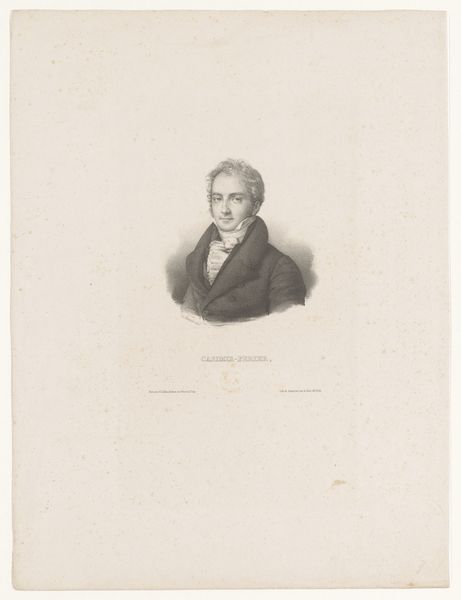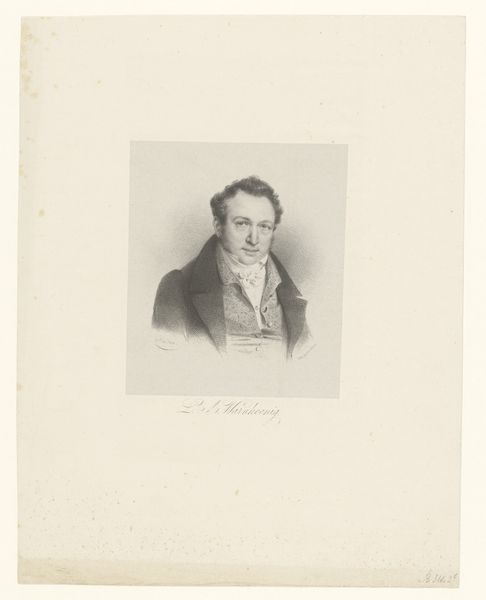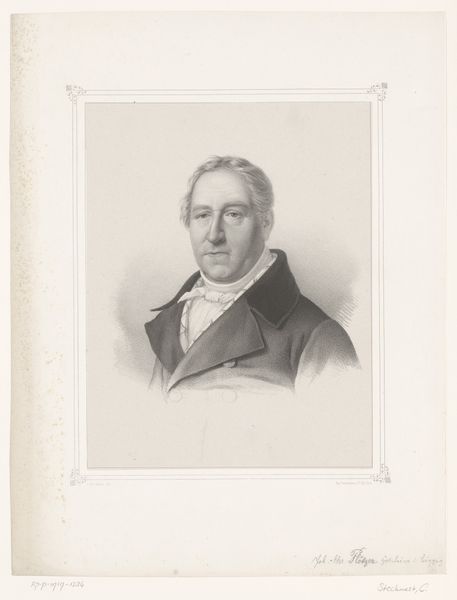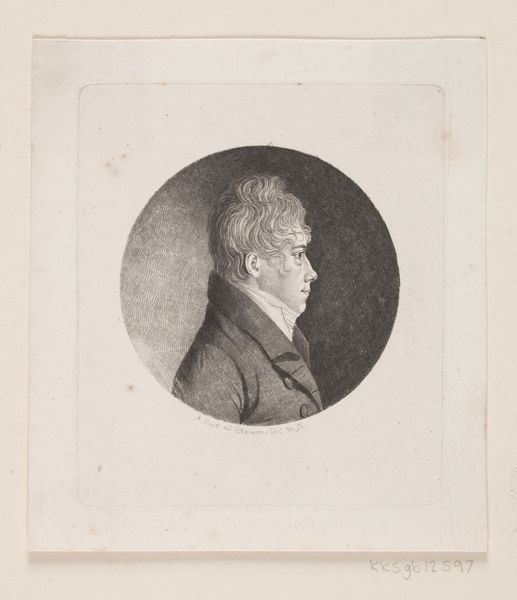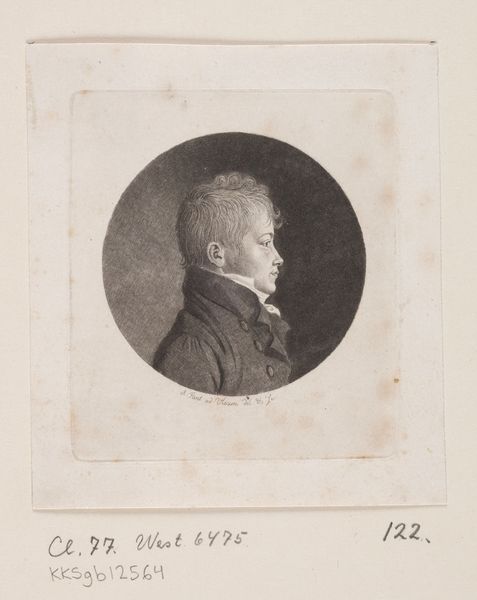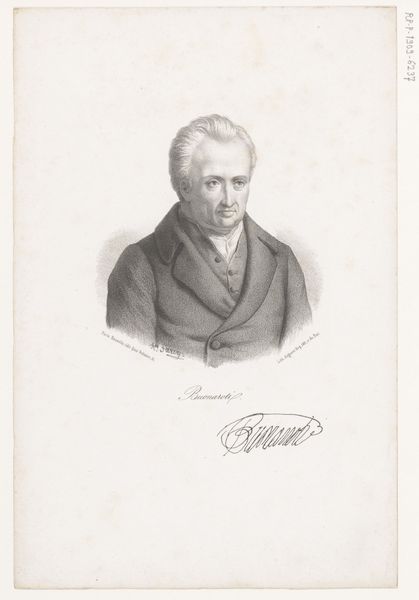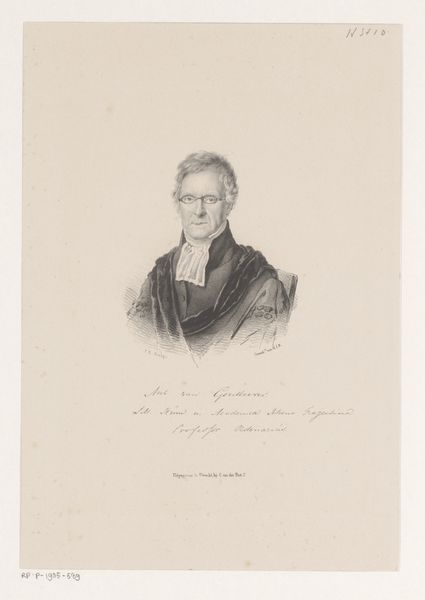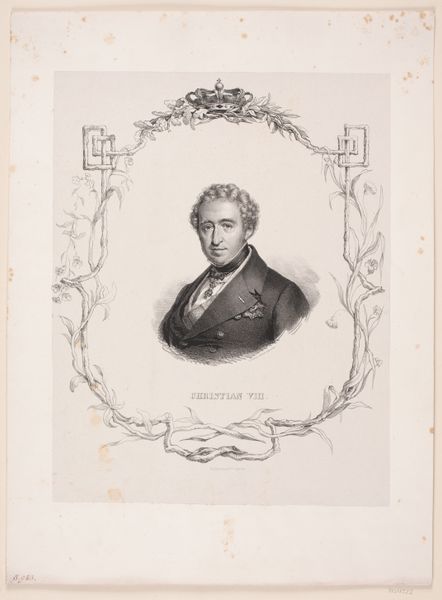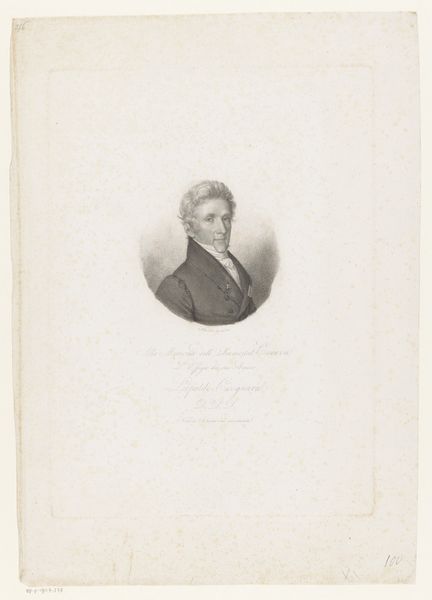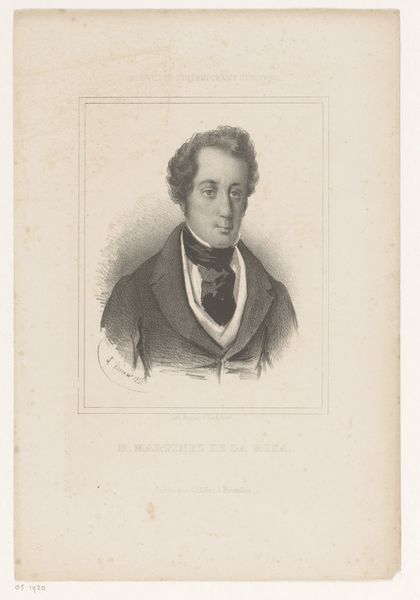
lithograph, print
#
photo of handprinted image
#
aged paper
#
toned paper
#
light pencil work
#
water colours
#
photo restoration
#
lithograph
# print
#
white palette
#
watercolour illustration
#
soft colour palette
#
watercolor
Dimensions: 458 mm (height) x 324 mm (width) (bladmaal)
Curator: This is a lithograph from 1837. The artwork is entitled "Statsråd S.A.W. Sørensen.” It’s currently held here at the SMK, Statens Museum for Kunst. Editor: He looks terribly unimpressed. All arms crossed and this intense almost withering look. Did they make it difficult to sit still back then, or was this guy just naturally grumpy? Curator: More likely a combination of both. Think about the lithographic process: each print requires the careful labor of preparing the stone, transferring the image, and pulling prints. Portraiture in this format provided a means of distributing images widely but still offered a handcrafted element that photography, yet in its nascent stage, couldn't quite match. Editor: Handcrafted is a nice way of putting it, considering he probably had to hold that pose for ages. I suppose that stare could also be profound boredom. Curator: Or maybe profound judgment! But yes, these prints would have been commissioned to project a certain status, a professional identity made accessible through reproducible means. It puts value not just in the image, but also in the labour behind its creation and distribution. Who gets remembered, and how? Editor: I wonder who was printing these back then? What their studio was like, and the environment. What a moment it must have been; the dawn of accessible artwork! What stories could it tell? The imperfections of the medium and the image make it much more striking. He isn't perfect either. Curator: Absolutely. It speaks to a moment of transformation—how images are made, who has access to them, and what kind of labour supports that ecosystem. The artist is obscured in the labour itself, rather the result and the dissemination of the artwork is at play. Editor: I wonder what old Sørensen would think if he could see us analyzing his face like this. Perhaps he’d be amused by the enduring legacy of his frown. Curator: Indeed. It's a powerful reminder that the artwork we appreciate today is also evidence of the historical landscape of material practice.
Comments
No comments
Be the first to comment and join the conversation on the ultimate creative platform.
